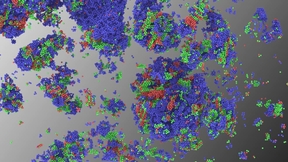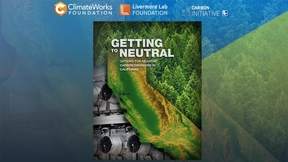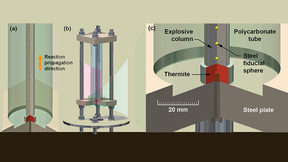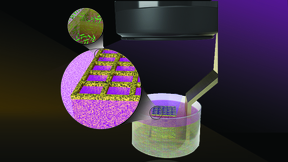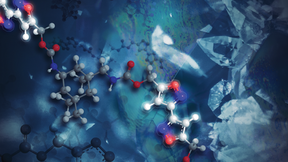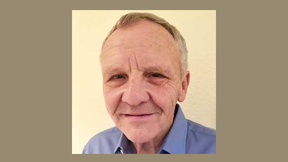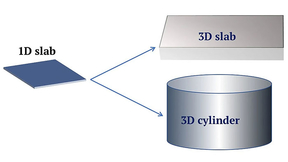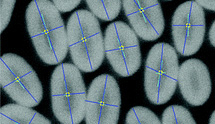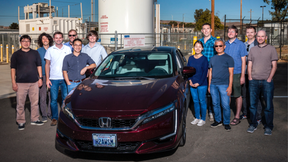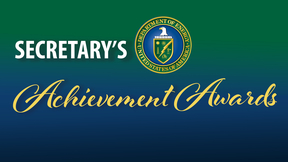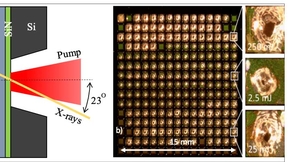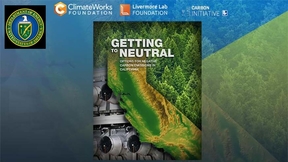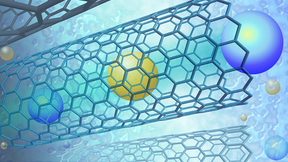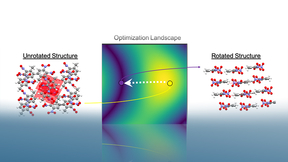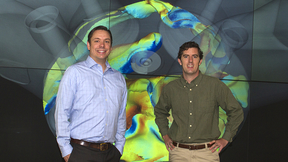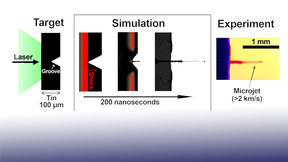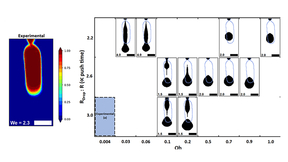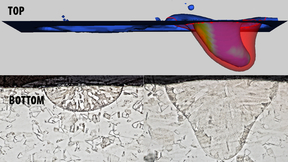Back
Since the dawn of civilization, metallurgy has determined the fate of powerful cities, states and empires. Blacksmiths have harnessed the power of heat to melt simple metals that would then be cast into hard, sharp and shiny alloys. Varying process conditions, such as rate of cooling and composition, can lead to new materials with dramatically different mechanical…
One year after publishing the groundbreaking "Getting to Neutral: Options for Negative Carbon Emissions in California," Lawrence Livermore National Laboratory (LLNL) has become a trusted adviser in the discussion of how to remove carbon dioxide from the air. In the report, LLNL scientists identified a robust suite of technologies to help California clear the last hurdle…
On Aug. 4, 2020, a massive explosion rocked Lebanon’s capital of Beirut, sending shockwaves through the city and shattering windows, reducing some buildings to rubble and killing at least 200 people. Officials have since traced the blast to a stockpile of more than 2,500 tons of confiscated ammonium nitrate stored in a port warehouse. While the official investigation is…
Lawrence Livermore National Laboratory (LLNL) scientists have developed a new method for 3D printing living microbes in controlled patterns, expanding the potential for using engineered bacteria to recover rare-earth metals, clean wastewater, detect uranium and more. Through a novel technique that uses light and bacteria-infused resin to produce 3D-patterned microbes, the…
The design of new explosive and propellant formulations, in compliance with insensitive munitions directives, require that performance be increased, while concurrently increasing stability and safety. Additional requirements include higher density, reduced environmental impact, improved mechanical properties, and extended service life. The combination of high explosives …
Craig Tarver (MSD) has been honored with the American Physical Society’s (APS’s) 2021 George E. Duvall Shock Compression Science Award for “theoretical advancement of the understanding of shock-driven reactions and detonation in condensed phase explosives.” Since 1968, the award—the highest offered by APS in shock compression science—has biennially recognized contributions…
Over time, moisture can change a material’s physical and chemical properties, altering its performance and the performance of other materials in close proximity. This change in performance is especially a concern when considering materials used in the food, packaging, medicine, electronics, and construction industries. Understanding the material moisture capacity and…
Physicist Bill Pitz (MSD) has been elected as fellow of the Society of Automotive Engineers (SAE). Bill studies combustion phenomenon in various types of engines. The fellow grade of membership was established by the society in 1975 to honor and recognize important engineering, scientific, and leadership achievements that enhance the status of SAE’s contributions to the…
Quantitative analysis of scanning electron microscopy (SEM) images is important for understanding the structural and morphological variations of nanomaterials. Information obtained from SEM images—such as the particle size, size distribution, and morphology—provide technical and scientific insights into the process of nanomaterial synthesis, fabrication, and manufacturing…
DOE’s Hydrogen and Fuel Cell Technology Office (HFTO) selected Brandon Wood and Tadashi Ogitsu (both MSD) for the 2020 Technical Program Area Award in Hydrogen Fuel R&D. This award recognizes the computational materials science team at LLNL for their exceptional support to the HydroGEN Advanced Water Splitting Materials and Hydrogen Materials Advanced Research…
Lawrence Livermore National Laboratory (LLNL) employees, participating in 10 project teams, recently earned Department of Energy (DOE) Secretary Achievement Awards. Representing some of the highest internal, non-monetary recognition that DOE employees and contractors can receive, these awards recognize DOE employees and contractors for their service and contributions to…
The first-ever shot to study a high explosive sample was recently conducted at the National Ignition Facility (NIF), the world’s most energetic laser. The results from the shot included novel data that will help researchers unlock the mysteries of high-explosive (HE) chemistry and position Lawrence Livermore National Laboratory (LLNL) to continue its legacy as a leader in…
By placing a shock-compressed sample of zirconium under ultrafast time-resolved X-rays, Lawrence Livermore National Laboratory (LLNL) scientists and collaborators were able to see an intermediate phase along the transition between two solid phases. Theory has predicted the existence of an intermediate step in this phase transition, but it had not been observed until now. …
Lawrence Livermore National Laboratory‘s (LLNL) "Getting to Neutral" Carbon Emissions Team has earned a Department of Energy (DOE) Secretary Achievement Award for its groundbreaking work on how California could reach the goal of becoming carbon neutral by 2045. Representing some of the highest internal, non-monetary recognition that DOE employees and contractors can…
Lawrence Livermore National Laboratory (LLNL) researchers have discovered that carbon nanotube membrane pores could enable ultra-rapid dialysis processes that would greatly reduce treatment time for hemodialysis patients. The ability to separate molecular constituents in complex solutions is crucial to many biological and man-made processes. One way is via the application…
Whether organic chemists are working on developing new molecular energetics or creating new blockbuster drugs in the pharmaceutical industry, each is searching how to optimize the chemical structure of a molecule to attain desired target properties. Part of that optimization includes a molecular crystal’s packing motif, a perceived pattern in how molecules orient relative…
Lawrence Livermore National Laboratory (LLNL) scientists and engineers have put together another first-rate year securing major grants through the Department of Energy’s (DOE) Technology Commercialization Fund (TCF). “We did quite well, although the diversity of the research projects funded wasn’t as broad as last year,” said Rich Rankin, the director of the Lab’s…
When a shock wave travels through material and reaches a free surface, chunks of material can break away and fly off at high speeds. If there are any defects on the surface, the shock forms microjets that travel faster than a speeding bullet. Understanding how these microjets form and how they interact with material help to improve spacecraft shielding and understanding a…
A team of Lawrence Livermore National Laboratory (LLNL) scientists has simulated the droplet ejection process in an emerging metal 3D printing technique called “Liquid Metal Jetting” (LMJ), a critical aspect to the continued advancement of liquid metal printing technologies. In the paper, the team describes the simulating of metal droplets during LMJ, a novel process in…
Lawrence Livermore National Laboratory (LLNL) researchers have taken a promising step in improving the reliability of laser-based metal 3D printing techniques by measuring the emission of electrons from the surface of stainless steel during laser processing. Researchers collected thermionic emission signals from 316L stainless steel under laser powder bed fusion (LPBF)…

